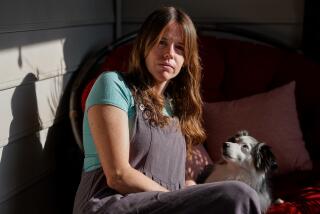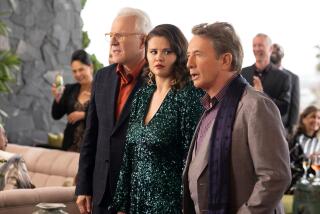Out to scout the scene of the crime
- Share via
John Armstrong
Location manager
Current job: CBS’ FBI thriller, “Numb3rs”
Job description: “We have two teams. My team does the odd episodes and my associate’s team does the even episodes. On each team we have one location manager, one assistant location manager and a utility player who goes back and forth.
“The location manager has two functions -- to scout for locations and to manage the locations once they are found. The basic process, at least on television since we work on a weekly basis, is that they come in with a new script about three or four days before the pre-period starts. We have an eight-day prep period followed by an eight-day shooting period.
“We will go through with the first assistant director and break down the script and, together with the producer and production designer, we’ll figure out what can be filmed onstage and out in the community. Generally, on ‘Numb3rs’ we are three or four days on location and four to five days in the studio.”
Location, location, location: “It helps to keep the show fresh to have a number of different looks and different locales. Some are obvious. If it says a fishing dock, we are not going to be doing that onstage. Generally, the things that we do onstage are all interiors, although with ‘Numb3rs’ we are fortunate we are at the L.A. Center Stages, which not only has sound stages but also an office building. So we use the exterior of the building, the lobby of the building and the parking lot.
“Then we have some recurring locations, one of which is ... the school where Charlie [David Krumholtz] works, which we shoot primarily at Caltech. “
Scene stealer: “The big challenge, of course, with episodic television is you need to shoot about seven pages a day and the problem is there are no seven-page scenes. Scenes tend to be from two-eighths of a page to a page and one-seventh, so you have to marry different locations together. The real challenge is when you have a two-page scene in the desert and you are trying to put that together with 1 1/2 pages in a bowling alley and a street scene. It is like putting together a big jigsaw puzzle.
“On rare occasion, when there is a location that sticks out like a sore thumb and doesn’t work, they will rewrite some of the script to make it work.”
Managing the site: “You go out and find locations and you show the pictures to the director and he looks at them with the production designer and they decide what the best alternative is. Once you have done that you have to secure the locations. You are responsible for all the contracts, insurance, special restrictions you have to make the company aware of. You deal with the safety department -- like if you are working on a high surface that you need to have railings put up around. We have to arrange for fire safety officers if we are dealing with any kind of pyrotechnics or working in a building where the public is coming and going. Then we have to get the police officers assigned. So you are dealing with a lot of different agencies. You have to get to know the city bureaucracies really well.
“If you are in a neighborhood, you are making sure that nobody’s driveway is being blocked or no lights are shining in windows. At the same time, you are trying to make sure that the company is getting all of its work done.”
Problem solving: “There is always something that can come in and blindside you. You can get to the street you are to be shooting and there is a crew from the city cutting trees or some homeowner has decided to put a roof on his house. You have to keep filming. It’s very rare that you don’t go ahead and shoot what you have to shoot -- you find your way around it.”
Beginnings: “I got a master’s in television production from San Francisco State University, and when I came down to L.A. in 1985, I just started looking around for people I knew. I found someone I had gone to college with who was an associate producer on a show. A couple of days later, she called and said they need some help in the location department. I started off as a cone carrier for the location department on ‘Cagney & Lacey.’ I got lucky and got on a long-running show. I moved up fairly rapidly. “
Credits: “Max Headroom,” pilot of “ER,” first season of “NYPD Blue,” “Jack & Jill,” “Sisters,” “Brooklyn South,” “Murder One,” “Brimstone,” the Mel Brooks movie “Life Stinks.”
Guild or union: Studio Transportation Drivers Local 399 -- the Teamsters
Age: 56
*
-- Susan King



